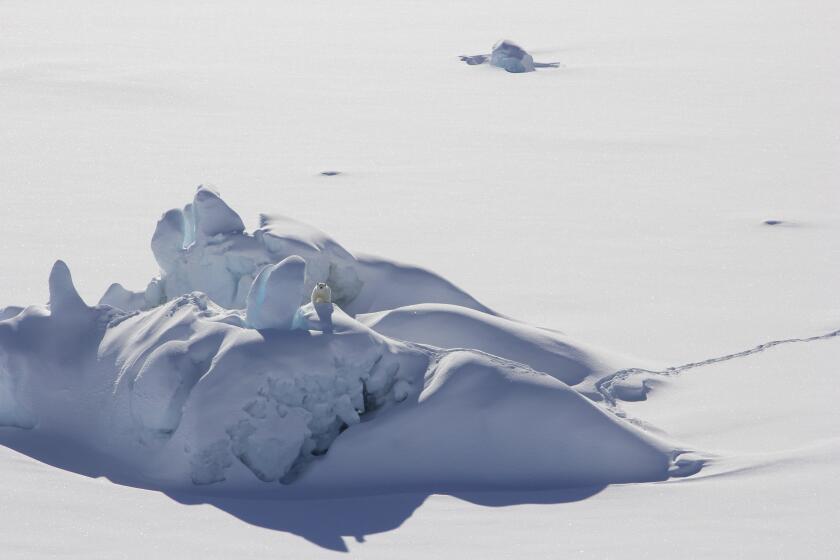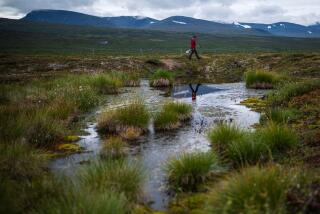Arctic report card: Record highs, rain and beaver damage

- Share via
The Arctic continues to deteriorate from global warming, not setting as many records this year as in the past but still changing so rapidly that federal scientists call it alarming in their annual Arctic report card.
The 16th straight health check for the northern polar region spotlighted the first-ever rainfall at the Greenland summit research station, record warm temperatures between October and December 2020, and the new problem of beavers moving into the Arctic.
“The trends are alarming and undeniable,” U.S. National Oceanic and Atmospheric Administration chief Rick Spinrad said in a statement before presenting the findings by 111 scientists from 12 countries at the American Geophysical Union conference Tuesday.
The 2020-21 polar year — scientists study the Arctic on a yearly basis from last October to this September — was the seventh-warmest on record. However, October to December 2020 set a record for the warmest autumn.
Record heat. Raging fires. What are the solutions?
Get Boiling Point, our newsletter about climate change, the environment and building a more sustainable California.
You may occasionally receive promotional content from the Los Angeles Times.
This report card comes out as the Arctic warms two to three times faster than the rest of the planet. The region’s melting ice opens the door to more pressures, including the potential for more oil and gas drilling, more mining and more tensions among countries wanting to exploit the area.
For the people who live there, it means having to adapt to a ground that is getting softer as permafrost melts, as well as changes to traditional hunting and fishing.
The reach of the sea ice, which hit its annual minimum in September, was the 12th-lowest on record. But the rarer thick sea ice, which stays around for more than a year, had its second-lowest reach for the end of the summer since records began being kept in 1985, reflecting a problem in the more crucial type of ice for the Arctic.
The heating of the planet is pushing Earth’s polar bear population to its limit, and according to a new study they could have fewer than 100 years left before extinction.
Report editor Twila Moon, a scientist at the National Snow and Ice Data Center, said people may think that “if something is not setting a brand-new record, then it’s going pretty well. And that is not true.”
The Arctic is on a roller coaster of acceptable conditions and horrible ones, Moon said, pointing to Greenland.
“If you had asked me in early July how we’re doing for the Greenland ice sheet, I would have given you two thumbs up. We were having, surprisingly, what felt like a normal year,” Moon said. “And then we had these really extreme melt events coming in late July and in August, creating brand-new records, giving us rainfall observed at the summit of Greenland for the first time ever.”
It’s usually so cold there that precipitation falls only as snow.
A new study details why a part of the Arctic nicknamed the “Last Ice Area” suddenly melted a bit in the summer of 2020.
Another unusual finding was the expansion of beavers into the Arctic, something Moon called “stunning.”
Beavers are a problem because the dams they build cause more water to pool on the surface. That, in turn, enhances permafrost thaw, making roads, airports, pipelines and buildings less stable, Moon said.
“It’s a real transformation or disruption of the existing ecosystem,” Moon said.
Hours before the report card release, the World Meteorological Organization announced that it had confirmed a new record high for the Arctic, set in June 2020 in Verkhoyansk, Russia. The temperature in the Siberian town hit 100.4 degrees.
That’s an absurd temperature for the Arctic, Moon said.





